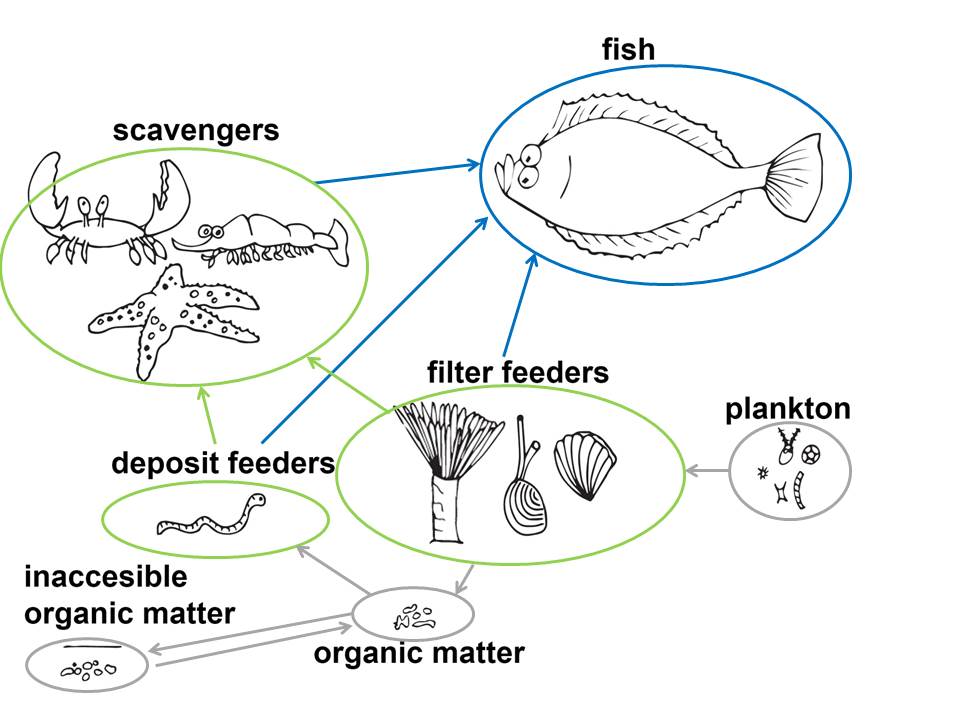
category_news
Impact of fisheries on sea floor food webs
How do the different types of fisheries impact the sea floor food web? BENTHIS researcher Van Kooten and his team used a functional group approach to tackle this problem.
Based on their traits, the species within the food web were assigned to one of three groups. Animals that enjoy feeding on other animals (dead or alive), such as crabs and sea stars, are classified as scavenger/predators. A second group consists of for example bivalves and tube worms, characterized by filter feeding. These animals pump water through their bodies to collect food particles. Finally, there are the deposit feeders such as worms that feed on organic matter in and on the seabed. On top of that, fish that prey on each of these groups are included in the model. These groups are all affected to a certain extent by the various types of fishery, but also eat each other and compete with each other. These ecological interactions can complicate, or even reverse the net effect of fisheries on these groups.

The impact per fishing technique depends on the characteristics of the fishing gear. A traditional beam trawl will plough through the seafloor with heavy tickler chains, removing fish and damaging everything on and in the top layers of the seafloor. A scallop dredge may have similar effects on the seafloor, but does not remove fish, whereas an otter trawl has less impact on the seafloor, but does remove fish. Given these kinds of relationships, the researchers have assessed the net effects of a number of fishing gears (beam trawl, otter trawl, dredge, shrimp and pulse trawl) on the abundance of each of the functional groups. Including ecological interactions in assessing the effects of different fishing gears has led to some surprising results.

Van Kooten: “We find that, independent of the fishing gear, both deposit feeders and filter feeders actually increase at high fishing intensity”. At high fishing intensity, fish abundance is greatly reduced. The increase or decrease of each functional group with increasing fishing intensity is shown in the figure. The lines show the equilibrium dynamics. Beyond a certain intensity of fishing pressure, at the right hand side of the graphs, coexistence of all three groups is no longer possible. Here, according to the model, scavengers are lost from the benthic ecosystem.
“At high fishing intensity, the indirect positive effect of reduced predation by fish appears to be substantially stronger than the direct mortality of the gear on the filter and deposit feeders, resulting, counterintuitively, in a net increase of them”, explains van Kooten. By changing the parameter values, the model can be applied to different regions. The model will be useful to fisheries managers to estimate food web effects of increased fishing intensity, or for example a change of the type of fishing gear used.

The work described in this text will be published as a scientific article in the near future, and will also become available as BENTHIS Deliverable 4.6
